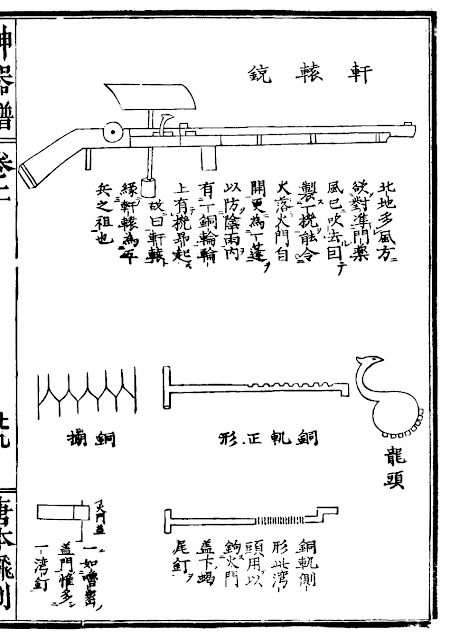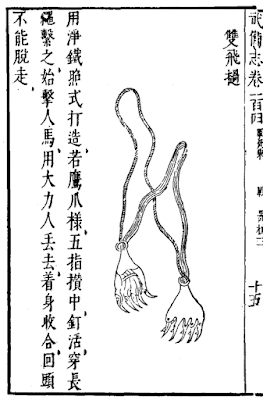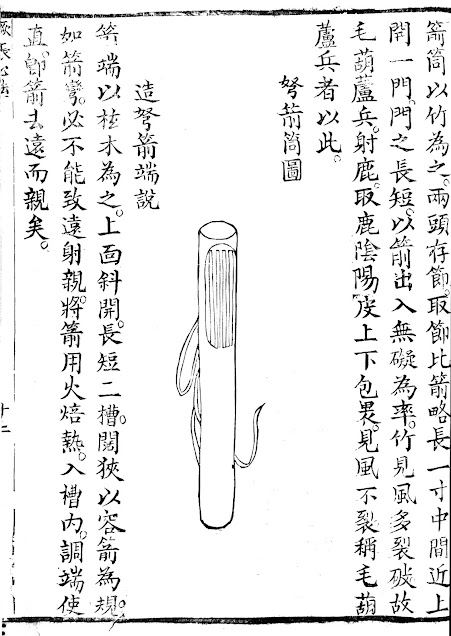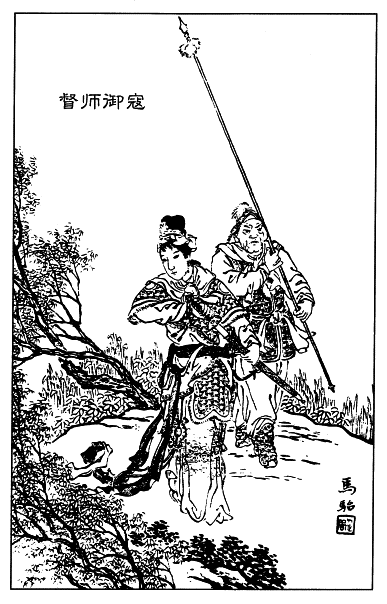UPDATED DECEMBER 18, 2023
NOTE: This blog post was originally called "Equipment of a Ming soldier — Archer". However, I quickly realised that some equipment listed below are actually training equipment or only used in ceremonial, hunting, or leisure archery, so I changed it to its current title.
Wearable equipment
Gong Du (弓䪅)
 |
| Drawing of a bow case, from a Japanese reprint of 'She Shi (《射史》)'. |
Gong Du is a bow case/bow holster. It is also called
Gong Dai (弓袋, bow bag) as well as a variety of other names.
Sa Dai (撒袋)
 |
| Drawing of a tube quiver (left), from a Japanese reprint of 'She Shi (《射史》)'. |
Sa Dai is an umbrella term for arrow quiver. A variety of quiver designs, both tube and pressurised, were used in China, although pressurised quiver (which squeezes the arrows in place to prevent them from falling out of the quiver, making it more convenient for horse archery) became the dominant type as early as Song period.
 |
Drawing of a pressurised quiver (right), from a Japanese reprint of 'She Shi (《射史》)'.
|
Chinese quiver was known by many different names depending of its type. Generally speaking, tube quiver is called
Jian Tong (箭筒, lit. 'Arrow tube'),
Jian Dai (箭袋, lit. 'Arrow bag') or
Hu Lu (葫蘆, lit. 'Gourd'), while pressurised quiver is called
Jian Ru (箭箙), which can also refer to an ancient type of rigid box quiver that fell out of use after Han period. In addition,
Hu Lu (胡簶) refers to a different type of
enclosed tube quiver of which the arrows are stored points up.
Shou Xiu (手袖)
 |
| Drawing of an archer's sleeve (left), from a Japanese reprint of 'She Shi (《射史》)'. |
Shou Xiu is an arm-length archer's sleeve worn on the bow-holding arm to prevent the wide sleeve from catching the bowstring, as well as to protect the arm from accidental whipping from the bowstring. It is also known as
Shi (拾).
Zhi Ji (指機)
 |
| Different perspectives of a Chinese thumb ring, from 'Jing Guo Xiong Lue (《經國雄略》)'. |
Zhi Ji, also known as
Ban Zhi (扳指) or
She (韘), is an archery thumb ring. The type that was commonly used during Ming period is also called
Ma Ti Ji (馬蹄機, lit. 'Horse hoof tool') due to its hoof-like shape.
Pei Ji (佩機)
 |
| Drawing of a thumb ring holder (right), from a Japanese reprint of 'She Shi (《射史》)'. |
Pei Ji is a thumb ring holder that can be worn on the belt like a waist pendant. It is usually made from ivory or sheep's horn.
Arrow retrieval
Jian Na (箭挐)
 |
| Two types of Jian Ru, from a Japanese reprint of 'She Shi (《射史》)'. |
Jian Na is a wooden
tongs used by horse archer to pick up arrow on the ground without having to dismount. Some variants of Jian Na come with two small hooks on their handles. The downward hook allows the tongs to be hung on a wall when not in use, can be used to hook away small accessories from enemy horseman, while the upward hook serves as a rest for bow holster or quiver.
Preservation and maintenance
Gong Yi (弓衣)
Gong Yi is a fabric or leather waterproofed bag used to store an unstrung bow to protect it from the elements. It is also known as Tao (韜), Chang (韔), and many other names, although it should be noted that the Chinese did not make a clear nomenclature distinction between an unstrung bow bag and a holster for strung bow.
Zhu Bi Gun Teng (竹閉緄滕)
 |
| Drawing of a Zhu Bi Gun Teng, from a Japanese reprint of 'She Shi (《射史》)'. |
Zhu Bi Gun Teng, proper name Bi (閉 or 䪐), also known as Qing (檠), is a tool made of bamboo splits and is used to prevent twisting or warping of bow limbs when the bow is not in use.
Gong Zheng (弓正)
 |
| Drawing of a Gong Zheng, from a Japanese reprint of 'She Shi (《射史》)'. |
Gong Zheng is a tool that is used as an aid to correct a twisted/misaligned bow limb. It is usually made of bamboo.
Jian Duan (箭端)
 |
| Drawing of a Jian Duan, from a Japanese reprint of 'She Shi (《射史》)'. |
Jian Duan is a simple arrow straightener. It is made from soft root of willow tree to reduce the risk of damaging the arrow shaft that is being fixed.


















